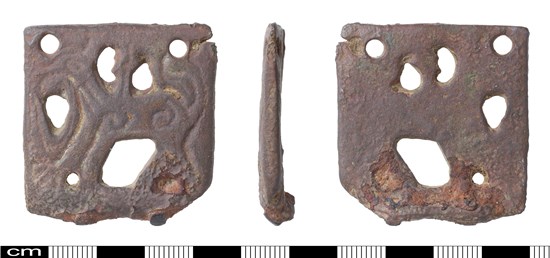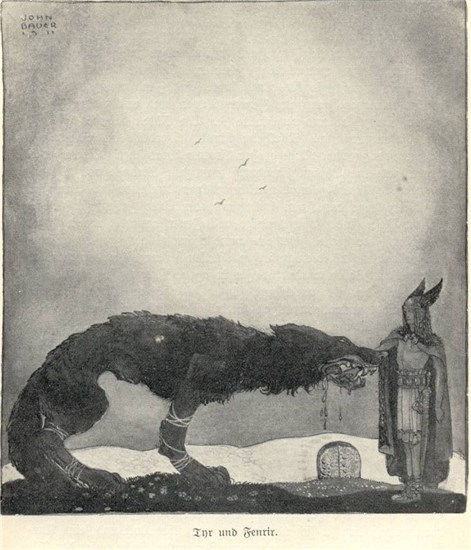Remember those ‘hidden 3D’ picture books that were all the rage once upon a time? You know the sort of thing: colourful abstract patterns which you could suddenly turn into a three-dimensional image if you made yourself go a little googly-eyed. You definitely needed the knack to make it work – but once you did, then it all fell into place.
Anglo-Scandinavian interlace patterns are a bit like that. The people of the Early Medieval period both loved to create these sometimes astonishingly intricate patterns of interwoven bands of decoration. Like those 3D pictures, there is more to them than meets the eye. What appears to be an abstract pattern often hides animals, birds, mythical beasts and people. The most remarkable examples are on such spectacular objects as the Sutton Hoo treasure and the stunning Lindisfarne Gospels.
But even humbler and much simpler objects have their secrets too. Take a look at this example, discovered near Dereham by a local metal detector user. It’s what is known as a ‘stirrup-strap mount’, something which was used from roughly AD 900 to 1200 to protect the strap on an iron stirrup. These are often decorated, and this is an interesting recent example, probably dating from the tenth century.

NMS-DAF1F7
So what’s going on here? You’ll spot the large animal which dominates it easily enough. Look out for its bushy tail, and the possible tree depicting behind the animal’s back. It looks like a large dog or a wolf. But that isn’t all that seems to be happening here.
Let’s dig a little deeper. Take a look at the beast’s head. If you look closely you can see a row of small zig-zag incisions depicting its sharp teeth. But only the top jaw is visible, because the creature has something in its mouth. Or, rather, part of someone. There’s a right arm belong to an individual who is out of the picture on the left. The creature has clamped its jaws round this person’s right hand and is biting – and biting hard (look at the effort in those neck muscles).
And now the picture falls into place. This isn’t a dog, it’s a wolf – a very large and nasty wolf called Fenrir, from Norse mythology. And the hand belongs to the warrior Týr, who decided one day to tie up this giant wolf. A bad idea: the wolf bit off the god’s hand when it realised what was going on. This object shows the scene at that (very) painful moment…

Fenrir and Tyr, pictured by Swedish artist John Bauer (Wikimedia Commons)
Find out more by visiting the Portable Antiquities Scheme record here. Thank you to the finder for submitting the object for recording https://finds.org.uk/database/search/results/q/NMS-DAF1F7